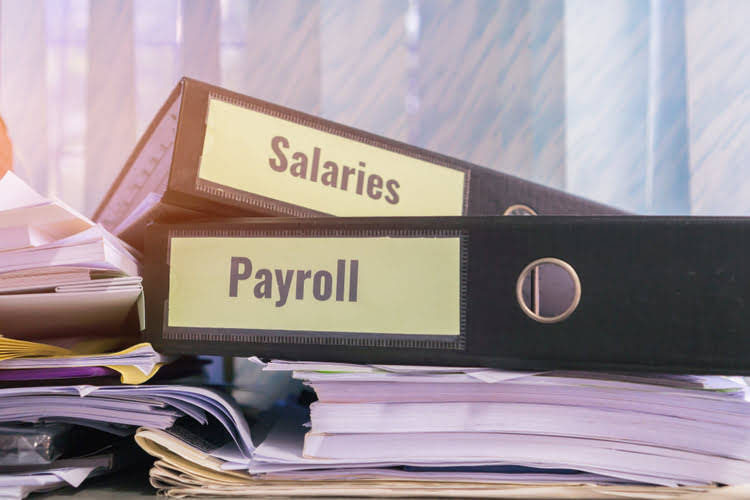
The closing entries are the journal entry form of the Statement of Retained Earnings. The goal is to make the posted balance of the retained earnings account match what we reported on the statement of retained earnings and start the next period with a zero balance for all temporary accounts. Closing entries are posted in the general ledger by transferring all revenue and expense account balances to the income summary account. Then, transfer the balance of the income summary account to the retained earnings account. Finally, transfer any dividends to the retained earnings account.
Step 3: Close and Credit
- While they tend to be similar and repetitive, it is worth having a good understanding of what entries are being made and why they are being made.
- A closing entry is a journal entry made at the end of an accounting period.
- Some accounting software automatically closes your income and expense accounts at year-end before adding your net profit (or loss) to your retained earnings account.
- This resets the balance of the temporary accounts to zero, ready to begin the next accounting period.
- We follow strict ethical journalism practices, which includes presenting unbiased information and citing reliable, attributed resources.
But closing the books for the financial year is more important for reflecting the correct retained earnings numbers on the balance sheet, which allows the start of https://x.com/BooksTimeInc a fresh financial year for profit and loss reporting. Regularly closing your books will prevent unwanted changes from occurring to your accounting data after you generate important financial reports for your accountant or tax professional. Instead, companies transfer the net income or net loss from the revenue and expense accounts to a temporary account called “Income Summary,” and then to the owner’s capital. In each temporary account, closing entries also result in a zero balance.
Introduction to the Closing Entries

By leveraging automated systems, businesses can ensure that all tasks related to closing entries are handled seamlessly, reducing manual effort and minimizing errors. Once we have made the adjusting entries for the entire accounting year, we have obtained the adjusted trial balance, which reflects an accurate and fair view of the bakery’s financial position. As mentioned, one way to make closing entries is by directly closing the temporary balances to the equity or retained earnings account.
The Accounting Cycle
- Likewise, if a temporary account has a credit balance, it is debited to bring it to zero and the retained earnings account is credited.
- Journal entries prepared at the end of the accounting period to zero out the revenue, expense, and dividend accounts so accounting can begin for the next period.
- Then, just pick the specific date and year you want the closing process to take place, and you’re done!
- Closing entries are performed after adjusting entries in the accounting cycle.
- It can also create errors and financial mistakes in both the current and upcoming financial reports, of the next accounting period.
Closing all temporary accounts to the income summary account leaves an audit trail for accountants to follow. The total of the income summary account after the all temporary accounts have been close should be equal to the net income for the period. At the end of the year, all the temporary accounts must be closed or reset, closing entries so the beginning of the following year will have a clean balance to start with. In other words, revenue, expense, and withdrawal accounts always have a zero balance at the start of the year because they are always closed at the end of the previous year. Income summary effectively collects NI for the period and distributes the amount to be retained into retained earnings. Balances from temporary accounts are shifted to the income summary account first to leave an audit trail for accountants to follow.

He has been the CFO or controller of both small and medium sized companies and has run small businesses of his own. He has been a manager and an auditor with Deloitte, a big 4 accountancy firm, and holds a degree from Loughborough University. Instead, as a form of distribution of a firm’s accumulated earnings, dividends are treated as a distribution of equity of the business. Shaun Conrad is a Certified Public Accountant and CPA exam expert with a passion for teaching. After almost a decade of experience in public accounting, he created MyAccountingCourse.com to help people learn accounting & finance, pass the CPA exam, and start their career.
Great! The Financial Professional Will Get Back To You Soon.

In accounting terms, these journal entries are termed as closing entries. The main purpose of these closing entries is to bring the temporary journal account balances to zero for the next accounting period, which keeps the accounts reconciled. Notice that https://www.bookstime.com/ the balances in the expense accounts are now zeroand are ready to accumulate expenses in the next period. The IncomeSummary account has a new credit balance of $4,665, which is thedifference between revenues and expenses (Figure5.5). The balance in Income Summary is the same figure as whatis reported on Printing Plus’s Income Statement. The purpose of the closing process for each period is to avoid incorrectly recording income or expenses in previous periods.
It contains all the company’s revenues and expenses for the current accounting time period. In other words, it contains net income or the earnings figure that remains after subtracting all business expenses, depreciation, debt service expense, and taxes. The income summary account doesn’t factor in when preparing financial statements because its only purpose is to be used during the closing process. Lastly, prepare a post-closing trial balance to verify that the balances of the permanent accounts are correct and that the temporary accounts have been reset to zero.
All revenue accounts are first transferred to the income summary. Here you will focus on debiting all of your business’s revenue accounts. After closing both income and revenue accounts, the income summary account is also closed.
Drawings Accounts and Closing Journals
Temporary accounts are used to record accounting activity during a specific period. All revenue and expense accounts must end with a zero balance because they’re reported in defined periods. A hundred dollars in revenue this year doesn’t count as $100 in revenue for next year even if the company retained the funds for use in the next 12 months. However, some corporations use a temporary clearing account for dividends declared (let’s use “Dividends”). They’d record declarations by debiting Dividends Payable and crediting Dividends.

